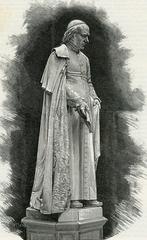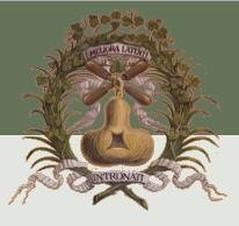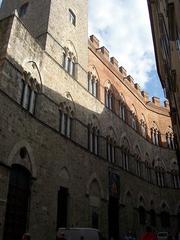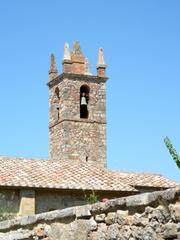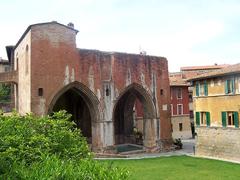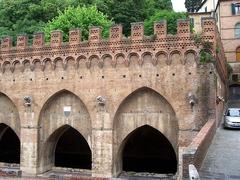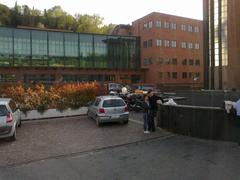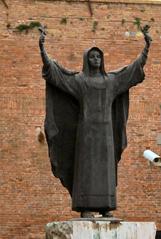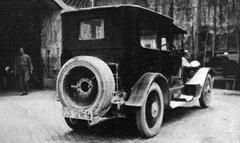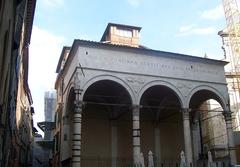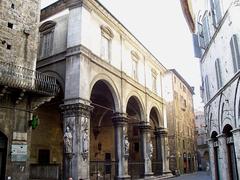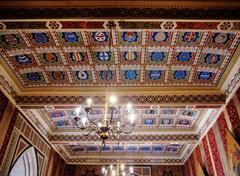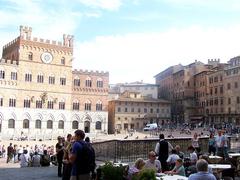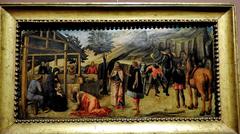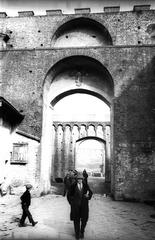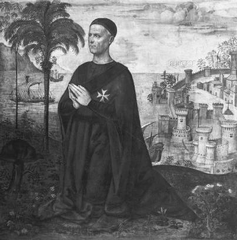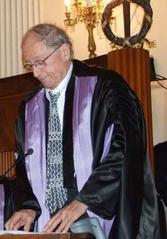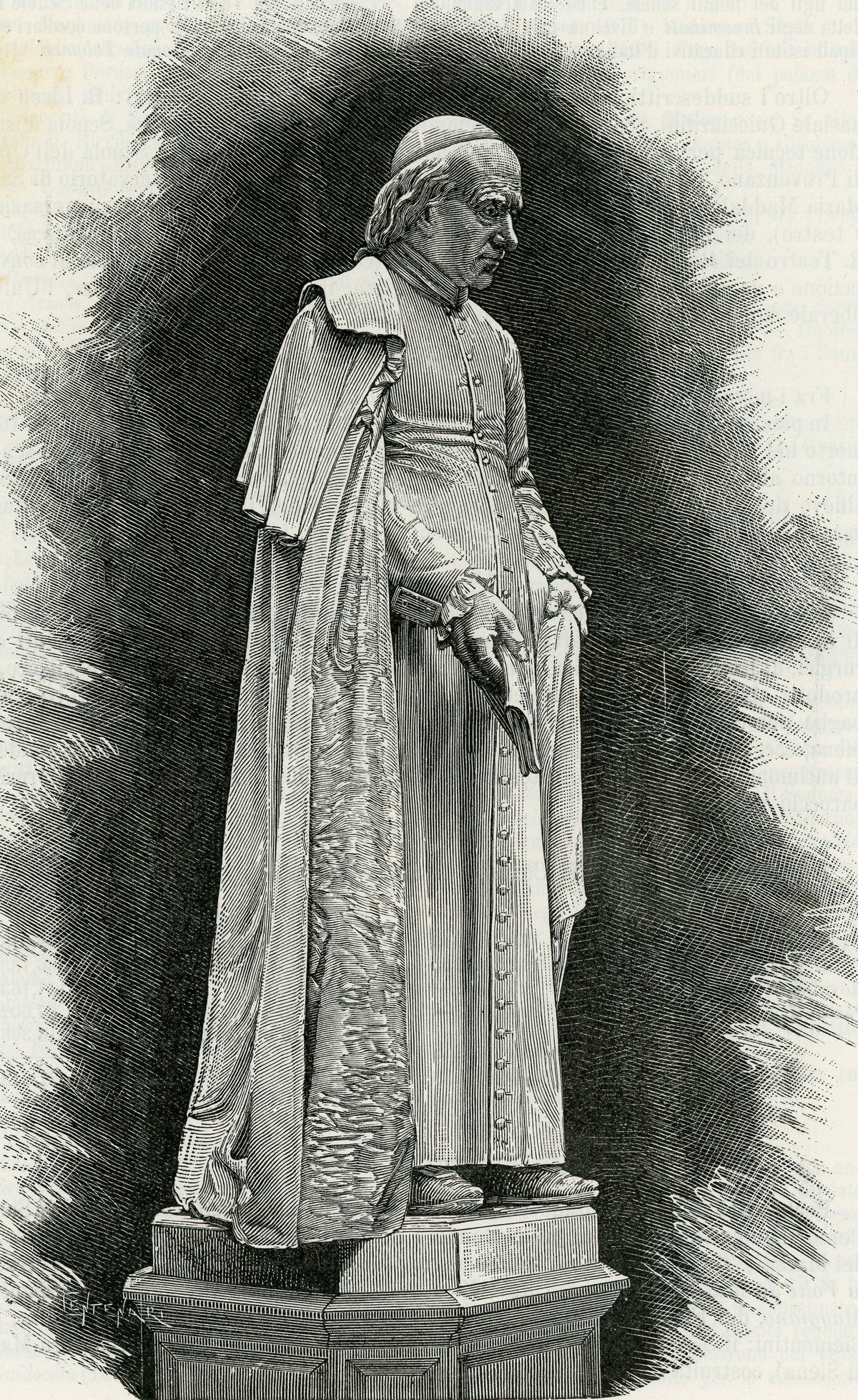
Statue of Sallustio Bandini: Visiting Hours, Tickets, and Siena Historical Sites Guide
Date: 14/06/2025
Introduction: Discovering Siena’s Iconic Statue
In the heart of Siena, Italy, the Statue of Sallustio Bandini stands as a powerful emblem of the city’s intellectual, economic, and artistic heritage. Set within the architecturally harmonious Piazza Salimbeni—framed by medieval and neo-Gothic palaces and home to the world’s oldest operating bank, Banca Monte dei Paschi di Siena—the statue honors Sallustio Antonio Bandini (1677–1760), a pioneering economist, priest, and Enlightenment thinker. His advocacy of economic reform, free trade, and cultural advancement continues to shape Siena’s identity, making the statue a compelling starting point for exploring the city’s layered history (Sallustio Bandini Statue and Legacy in Siena; Piazza Salimbeni and the Statue of Sallustio Bandini in Siena).
This guide provides all the practical and historical information you need to appreciate the statue, including visiting hours, ticketing, accessibility, nearby attractions, and local insights—helping you make the most of your visit to this Siena historical site.
Table of Contents
- Sallustio Bandini: Siena’s Enlightenment Icon
- Historical Context and Bandini’s Legacy
- The Statue of Sallustio Bandini: Artistry and Symbolism
- Visiting Information: Hours, Tickets, and Accessibility
- Piazza Salimbeni: Architecture and Urban Setting
- Nearby Attractions and Suggested Itineraries
- Visitor Tips and Local Customs
- Frequently Asked Questions (FAQ)
- Media and Additional Resources
- References and Further Reading
Sallustio Bandini: Siena’s Enlightenment Icon
Sallustio Bandini was a leading figure in Siena’s Enlightenment, renowned for his economic theories, advocacy for free trade, and commitment to public education. His 1737 treatise, Discorso sopra la Maremma di Siena, championed land reclamation and economic liberalization, laying the groundwork for later economic thought. Bandini’s bequest of nearly 3,000 books to the city’s Biblioteca comunale degli Intronati cements his legacy as both a scholar and civic benefactor (Sallustio Bandini Statue and Legacy in Siena).
Historical Context and Bandini’s Legacy
Born in Siena in 1677, Bandini became archdeacon of the city and a respected academic. He witnessed and influenced the transition from Medici to Lorraine rule in Tuscany, using his position to promote economic and social reforms. Bandini’s ideas anticipated classical economics and physiocracy, emphasizing minimal state intervention and the primacy of agriculture. His enduring influence is celebrated not only by the statue, but also through the institutions and economic traditions of Siena.
The Statue of Sallustio Bandini: Artistry and Symbolism
Sculpted by Tito Sarrocchi in 1882, the Bandini statue is a focal point of Piazza Salimbeni. Bandini is depicted in clerical robes, holding a book—a tribute to his scholarly and civic contributions. The statue’s neoclassical style and prominent position before the Monte dei Paschi di Siena headquarters creates a powerful connection between Siena’s intellectual, religious, and financial legacies (Visiting the Statue of Sallustio Bandini in Siena).
Visiting Information: Hours, Tickets, and Accessibility
- Location: Piazza Salimbeni, Siena, in front of Banca Monte dei Paschi di Siena.
- Visiting Hours: The statue and piazza are accessible 24 hours a day, every day.
- Tickets: No admission fee is required; the site is free to visit.
- Accessibility: The square is flat, paved, and suitable for wheelchairs and strollers.
- Guided Tours: Many walking tours of Siena include Piazza Salimbeni and the Bandini statue. For specialized tours, consult the Siena Tourism Office or local providers.
- Special Events: Piazza Salimbeni sometimes hosts cultural events and commemorations; check the official Siena events calendar for updates.
Note: The interior of Palazzo Salimbeni is generally closed to the public, with occasional access during special events or exhibitions (Holidify).
Piazza Salimbeni: Architecture and Urban Setting
Piazza Salimbeni is one of Siena’s most architecturally distinguished squares. Bordered by:
- Palazzo Salimbeni (14th century, later neo-Gothic façade): Headquarters of Monte dei Paschi di Siena.
- Palazzo Spannocchi (15th century): Renaissance features.
- Palazzo Tantucci (16th century): Mannerist details.
The square’s harmonious appearance is the result of 19th-century neo-Gothic restoration by Giuseppe Partini (Piazza Salimbeni in Siena). The space is intimate, elegant, and entirely pedestrian, making it ideal for leisurely exploration and photography.
Nearby Attractions and Suggested Itineraries
Combine your visit to the statue with these Siena historical sites, all within walking distance:
- Piazza del Campo: Siena’s main square, renowned for the Palio horse race.
- Siena Cathedral (Duomo di Siena): A masterpiece of Gothic art and architecture.
- Biblioteca comunale degli Intronati: Originating from Bandini’s donation, open for guided tours.
- Palazzo Tolomei, Palazzo Spannocchi, and Palazzo Bandini-Piccolomini: Examples of Siena’s medieval and Renaissance palaces.
- Via Banchi di Sopra: A vibrant street for shopping and local cuisine.
For food and drink, nearby trattorias offer Sienese specialties like pici pasta, ribollita, and local sweets, with Chianti wine tastings available in the region (visitsienaofficial.it).
Visitor Tips and Local Customs
- Best Times to Visit: Early morning or late afternoon for soft light and fewer crowds.
- Photography: The interplay of statue and neo-Gothic architecture offers excellent photo opportunities.
- Etiquette: Be mindful of daily business activity; avoid blocking entrances and maintain a respectful demeanor.
- Accessibility: The piazza is accessible, but some nearby medieval streets may be steep or uneven.
- Safety: The area is well-lit and safe; keep valuables secure during busy events.
Frequently Asked Questions (FAQ)
Q: Are there tickets or fees to visit the statue and piazza?
A: No, both are free and open to the public at all times.
Q: Is the site wheelchair accessible?
A: Yes, the square is flat and paved, suitable for wheelchairs and strollers.
Q: Can I join a guided tour that includes the statue?
A: Yes, many Siena walking tours feature Piazza Salimbeni; check with local tourism offices for options.
Q: Can you enter Palazzo Salimbeni?
A: Generally, entry is restricted except for special events or guided tours.
Q: When is the best time to visit?
A: Early mornings and late afternoons offer the best experience and lighting.
Media and Additional Resources
- High-resolution images of the statue and piazza, with descriptive alt text such as “Statue of Sallustio Bandini in Piazza Salimbeni, Siena.”
- Interactive maps and virtual tours are available via the official Siena tourism website.
- For more information on Bandini’s life and legacy, consult the Biblioteca comunale degli Intronati.
References and Further Reading
- Sallustio Bandini Statue and Legacy in Siena: Visiting Hours, Tickets, and Historical Insights
- Visiting Piazza Salimbeni and the Statue of Sallustio Bandini in Siena: Hours, Tours, and History
- Piazza Salimbeni in Siena: Visiting Hours, Tickets, and Architectural Highlights
- Visiting the Statue of Sallustio Bandini in Siena: Hours, Tickets, and Historical Insights
Plan Your Visit
The Statue of Sallustio Bandini and Piazza Salimbeni offer a unique window into Siena’s storied past, from the Enlightenment to its vibrant present. With 24/7 public access, rich architectural context, and proximity to many of Siena’s top historical sites, this destination is a must for history buffs and curious travelers alike. To enrich your experience, download the Audiala app for guided audio tours, check out related Siena articles, and follow us on social media for the latest updates and insider tips.
